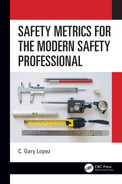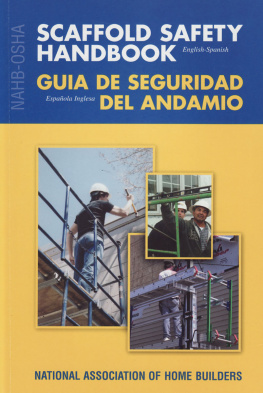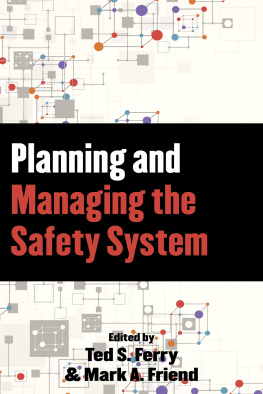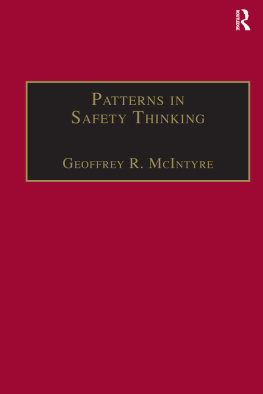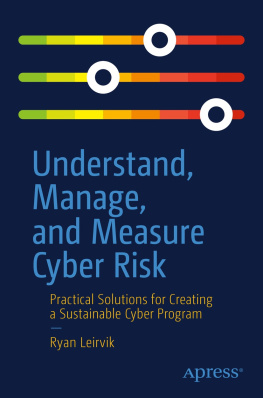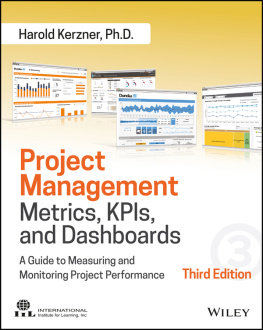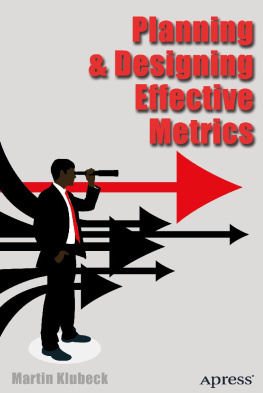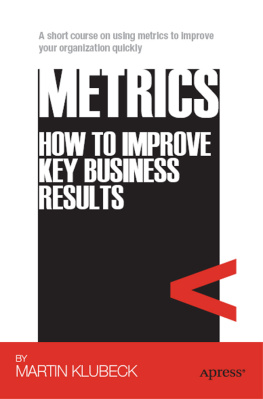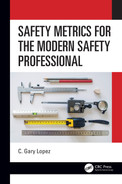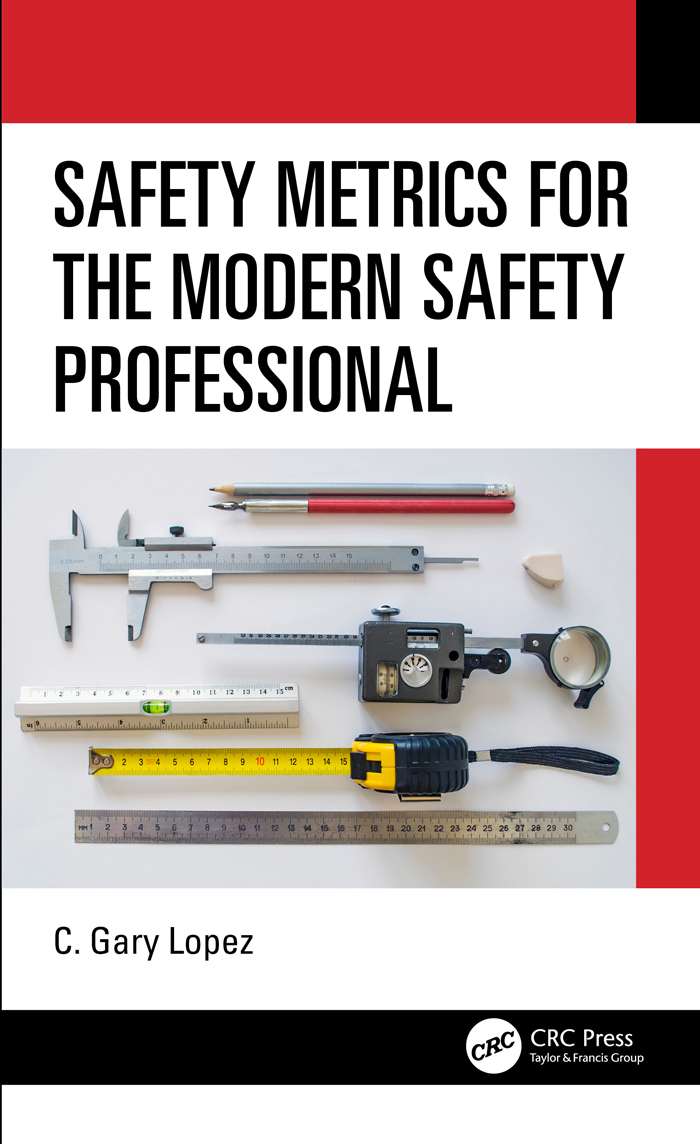SAFETY METRICS FOR
THE MODERN SAFETY
PROFESSIONAL
SAFETY METRICS FOR
THE MODERN SAFETY
PROFESSIONAL
C. Gary Lopez

First edition published 2021
by CRC Press
6000 Broken Sound Parkway NW, Suite 300, Boca Raton, FL 33487-2742
and by CRC Press
2 Park Square, Milton Park, Abingdon, Oxon, OX14 4RN
2021 Taylor & Francis Group, LLC
CRC Press is an imprint of Taylor & Francis Group, LLC
Reasonable efforts have been made to publish reliable data and information, but the author and publisher cannot assume responsibility for the validity of all materials or the consequences of their use. The authors and publishers have attempted to trace the copyright holders of all material reproduced in this publication and apologize to copyright holders if permission to publish in this form has not been obtained. If any copyright material has not been acknowledged please write and let us know so we may rectify in any future reprint.
Except as permitted under U.S. Copyright Law, no part of this book may be reprinted, reproduced, transmitted, or utilized in any form by any electronic, mechanical, or other means, now known or hereafter invented, including photocopying, microfilming, and recording, or in any information storage or retrieval system, without written permission from the publishers.
For permission to photocopy or use material electronically from this work, access
Trademark notice: Product or corporate names may be trademarks or registered trademarks and are used only for identification and explanation without intent to infringe.
Names: Lopez, Gary, author.
Title: Safety metrics for the modern safety professional / Gary C. Lopez.
Description: First edition. | Boca Raton, FL : CRC Press, 2021. | Includes
bibliographical references and index.
Identifiers: LCCN 2020026903 (print) | LCCN 2020026904 (ebook) | ISBN
9780367497057 (hardback) | ISBN 9781000227239 (ebook)
Subjects: LCSH: Industrial safety--Evaluation--Statistical methods. |
Industrial management--Evaluation--Statistical methods.
Classification: LCC T55.3.S72 L67 2021 (print) | LCC T55.3.S72 (ebook) |
DDC 363.11072/7--dc23
LC record available at https://lccn.loc.gov/2020026903
LC ebook record available at https://lccn.loc.gov/2020026904
ISBN: 9780367497057 (hbk)
ISBN: 9781003088332 (ebk)
by MPS Limited, Dehradun
Contents
I began my journey in the field of safety in 1976. That seems like an eon ago as I look back at the long journey on which my career path has taken me. As I reflect on how the field of safety has evolved, as well as the safety professionals in that field, this journey might as well have started in the last ice age.
Speaking of reflection, as I think back regarding the metrics I was forced to use as I entered the field (and for some time after), I am ashamed to say that I did not comprehend the shortcomings of these metrics more quickly. However, like many other safety professionals of the time, I inherited them and did not question them. After all, those metrics had been in use for over half a century. Who was I to question them? To not use them would have made me look like a heretic.
Perhaps with expanded responsibility, comes expanded vision. As I rose up the career ladder in my company, I found that these metrics were inadequate. They simply did not measure up (not to make a pun) to address the scope of what I did in terms of managing the risks for my organization. In fact, to limit me to these employee injury only metrics would have limited my role regarding the types of risks I was managing. They were narrow in focus, and, worse, the numbers used were abstract and little understood by my peers on the management team. In fact, once you left the circle of my fellow safety professionals, these numbers made little sense.
Even this latter assumption of my peers in the safety field understanding them is probably an exaggeration. As I discussed this dilemma with many of those peers, I found that, in many instances, they did not dwell on these numbers or if they truly measured all we did. Many could neither identify where the formulas came from, nor the logic behind them. We simply echoed and repeated them like trained parrots.
Admittedly, this personal metric crisis was of my own doing. Your view from the top of the corporate ladder changes how you see things as compared to when you showed up for your first day of work as a safety engineer (which was my first title). As you rise to the top of the corporate ladder and deal with others who are taking a strategic look at what they are doing, it causes even the most apathetic thinker to take an introspective look at if what you are doing brings true value to your organization. It compels you to ask introspective questions, such as am I measuring success (and conversely failure) well? Am I grasping our strategic mission to my organization? Am I worth the handsome salary my company pays me? Or, put another way, What am I doing to earn my paycheck?
These questions led me to understand that my job was larger in scope than managing employee injuries and illnesses. Clearly, I was managing risk to the organization. A much bigger picture. While this kind of thinking is becoming commonplace today, it was pure heresy in the zero accident era of the 1980s when I began this journey. Nevertheless, it led me down the path of understanding that measuring success in my efforts was going to require more sophisticated approaches to metrics than lost time accident rates or recordable injury rates.
This metric crisis I was going through was only exacerbated when I became part of the business team. Now I was the one who had to ask for capital dollars for safety improvements or design changes. While other members of the business team used the dollar as a metric to justify their requests, I was using no logic other than because it is safety as my rationale. Soon I had to learn to use the dollar as my logic.
In the following pages, I will take the reader through the journey I took in expanding metrics to identify success in what we do for our organization. While each organizations goals and objectives may demand various metrics, the concept of measuring this success in more than one area, or should I say dimension, of what we do as safety professionals is a constant.
My major purpose in writing this book was to pass this knowledge along to future safety professionals and those struggling with some of the same measurement issues I experienced in my career. It is my hope that this will provide some guidance and insight into what the 21st-century safety professional will need in their journey through their career.
I would also be remiss in not pointing out to the reader that what you read in the following pages is not academic theory. This is not meant as an aspersion of academia in any way. Such theory can come not just from higher education, but also from someone having a flash of brilliance or sincerely believing their great idea will work. By experience, I mean to say that what the reader will see in the following pages is what I saw work well in my organization, not my flashes of brilliance, of which there were few. This should comfort the reader in knowing that the examples I provide in the following pages are not based on the latest safety craze or fad. What you will read about in these pages is knowledge gained through hard experience. Some knowledge, I might add, painfully gained the hard way. By making mistakes. Sometimes the hardest lessons in life are the best lessons in life. We learn from our failures as much as we do from our successes. Perhaps more so.

